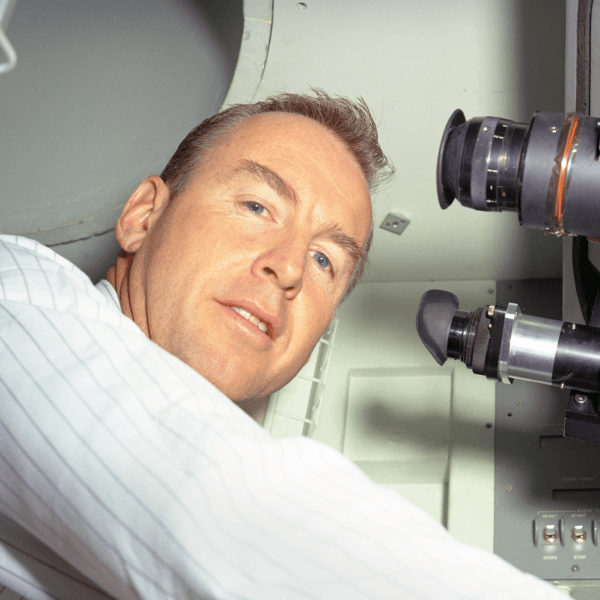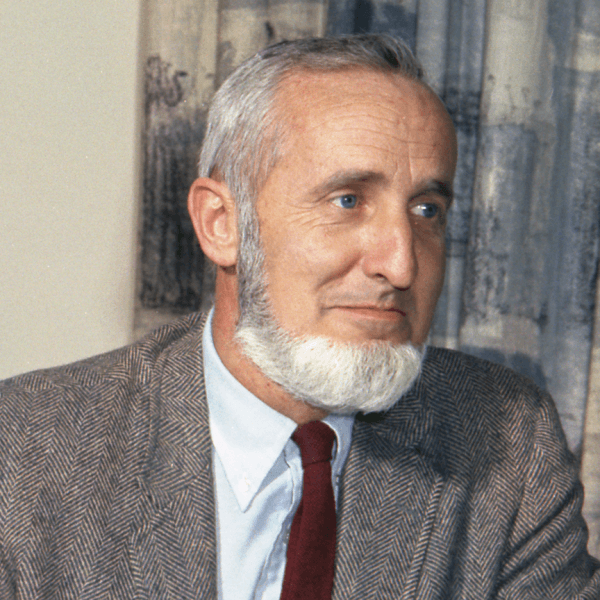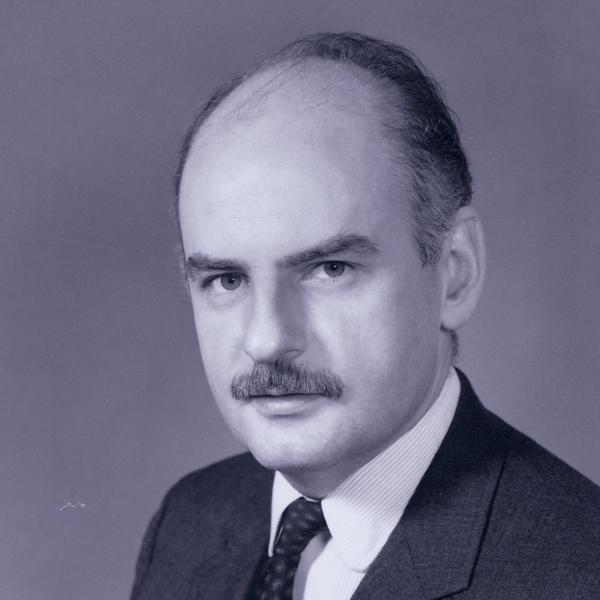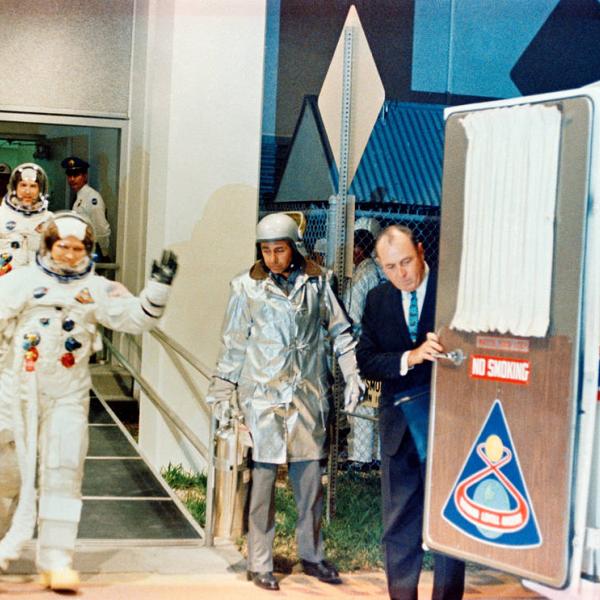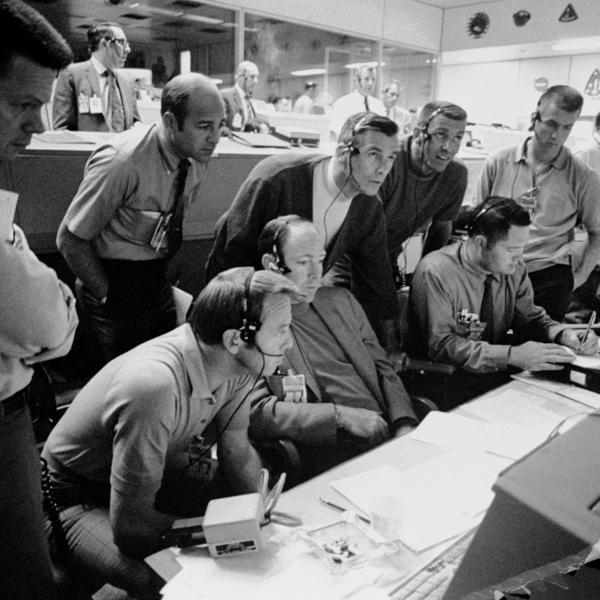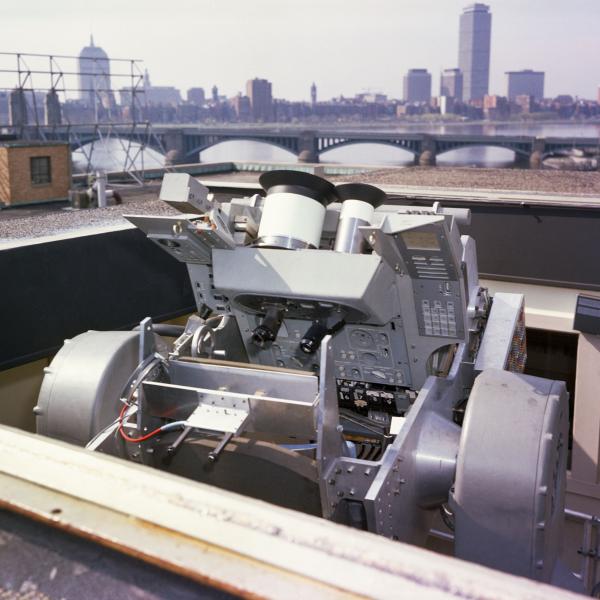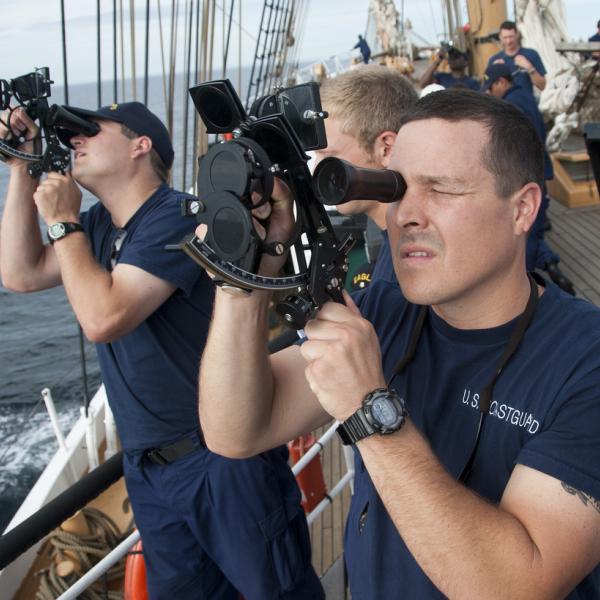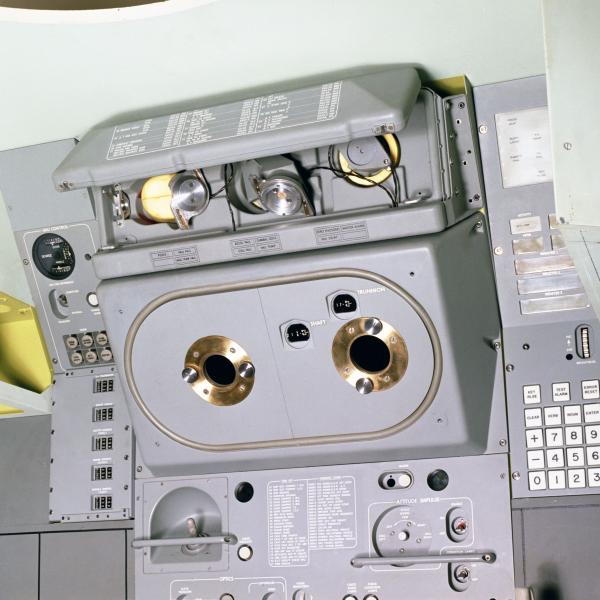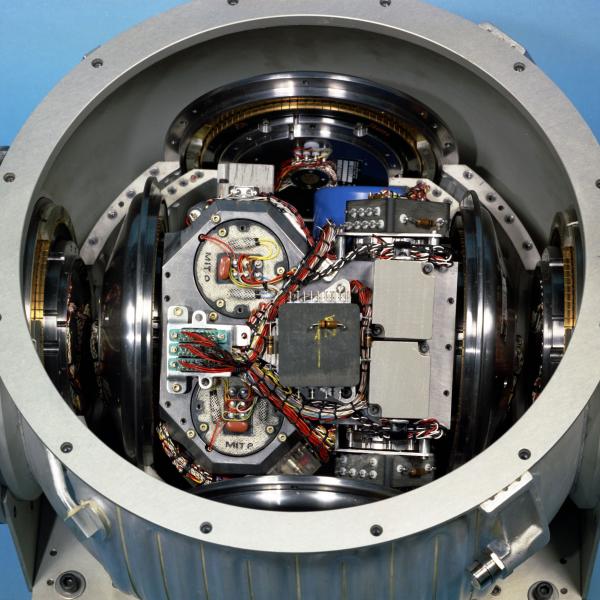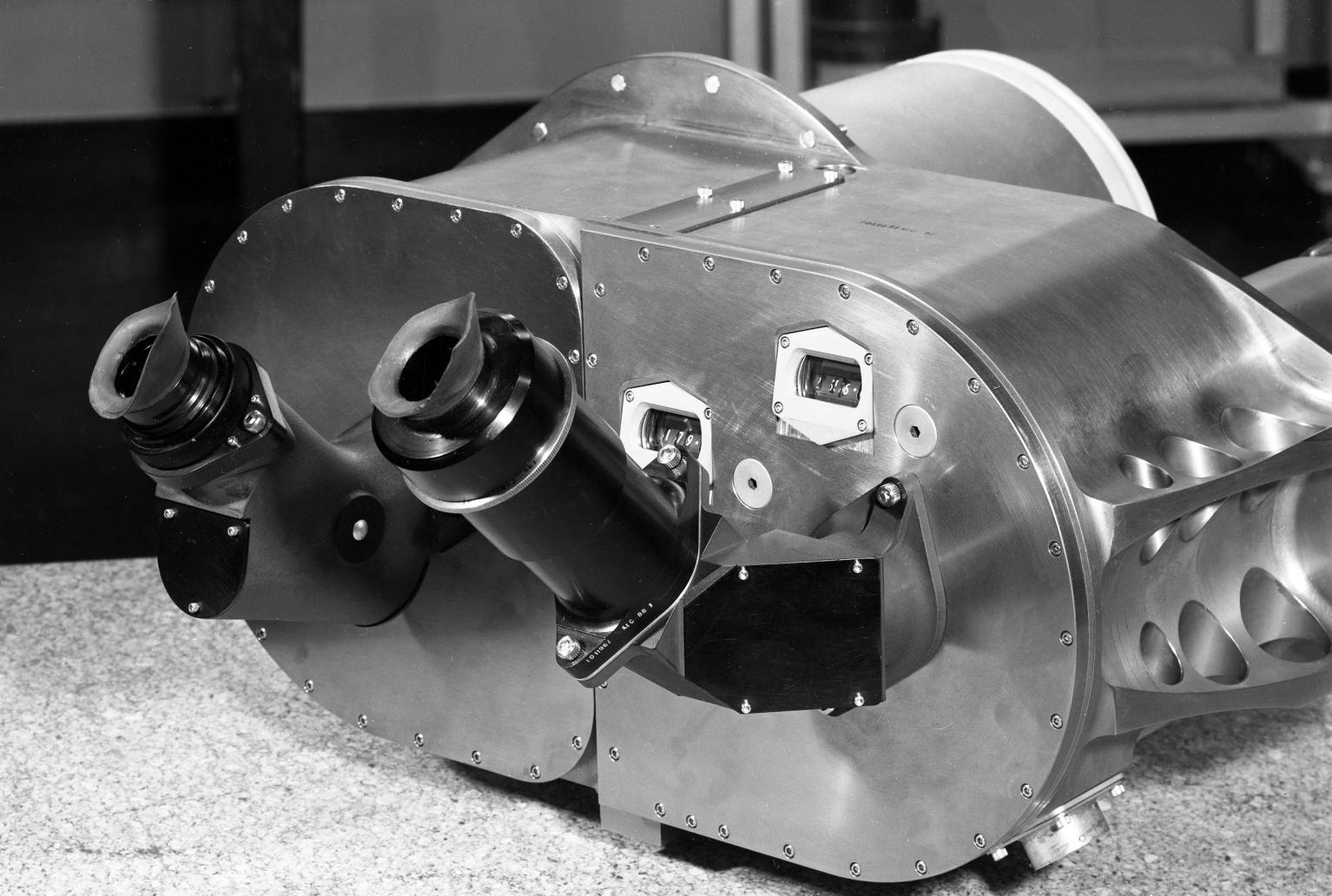
Space Sextant Navigates the Moon Missions
Want to find your way home? Try a space sextant.
The Apollo program featured the newest, most high-tech science innovations we’ve ever seen to make the moon landing successful, as well as one of the oldest and simplest devices. Going back hundreds of years, sailors lost at sea used a small metal device to determine their position. With the look of a protractor and the utility of a supercomputer, a sextant measures the angular distance between two stars. With a touch of math, and these coordinates you can figure out wherever you are in the world.
The command module's optics system, called the ‘space sextant’ flew on each Apollo mission, and took the naval sextant to a whole new level. It was a fail safe navigation system that required no power to work and operated independently of all other navigation systems. Through explosions and lightning strikes, the sextant was the critical backup tool that helped the astronauts get back on course.
The space sextant consists of two lines of sight: a wide-angle view scanning telescope and a 28-power narrow-field-of-view space sextant (or reference telescope). The astronaut used the scanning telescope to locate desired stars or constellations as landmarks. He used the sextant to take a navigation reading. The astronaut rotated the spacecraft until a landmark (like the Earth or Moon’s horizon) was in view of the space sextant’s fixed line of sight. Next, they located a star using the scanning telescope. Then, the astronaut adjusted the space sextant’s second of line sight to superimpose the star over the landmark and pressed a button marking the instrument’s reading and the time. Once a reading was taken, the Apollo Guidance Computer (AGC) calculated the spacecraft’s position based on those readings and data stored in its memory.
While orbiting the moon the sextant could also be used to calculate the exact position and altitude of the spacecraft. NASA relied on these precise measurements to make a safe landing, and return, of the Lunar Module to the ‘mother-ship’ spacecraft.
The lunar module was only equipped with an alignment optical telescope. This was a lighter, simpler manual telescope (like a periscope) that the astronauts would use during moon landings and takeoffs to determine their position.
During a time when the Soviet Union was aggressively trying to steal information on the US space program, the space sextant was also the ultimate non-hackable tool. Only the astronaut using it would have the information about where they were in space.
The space sextant saved the Apollo 8 crew when Astronaut Jim Lovell made a mistake entering commands into the computer navigation system and had to correct the course of the spinning spacecraft through manual navigation. He literally had to hack into the computer to get it back on course! This mishap on Apollo 8 ended up being the saving grace on Apollo 13. Lovell was the only astronaut in the world with the real-life experience to navigate the crippled spacecraft back to Earth, saving himself and his crew. Call it serendipity or divine intervention, either way the sextant saved the day.
